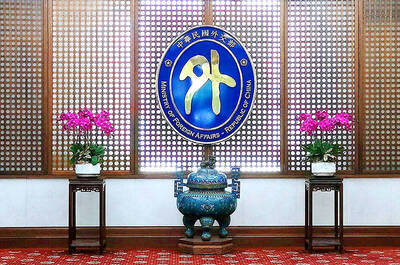A national referendum on activating the long-mothballed Fourth Nuclear Power Plant in New Taipei City’s Gongliao District (貢寮) is set for Aug. 28, the Central Election Commission (CEC) said on Friday.
The Referendum Act (公民投票法) stipulates that national referendums can only be held once every two years, starting from this year, and only on the fourth Saturday of August.
Polling stations would open from 8am to 4pm, the commission said.
The agency is to announce the referendums on May 27, hold presentations on the referendum questions from May 28 to Aug. 27 and announce the number of voters eligible for the referendums by Aug. 24, it said.
The result of the referendums would be announced on Sept. 3, although unofficial results should be known the night of the vote, it said.
So far, only the nuclear power plant referendum initiative, launched by nuclear power proponent Huang Shih-hsiu (黃士修), has met the endorsement threshold required to be put to a vote.
It asks: “Do you agree that the Fourth Nuclear Power Plant should be activated for commercial operations?”
The plant, which was close to completion before being shelved in 2014, has been a focal point in debates over nuclear power.
Supporters have lauded it as a clean and relatively cheap energy solution to the problems of air quality and rising electricity costs.
Critics warn of the safety hazards of using the plant in particular and nuclear power in general, citing the 2011 Fukushima Dai-ichi nuclear power plant disaster in Japan.
Several initiatives remain in the works, including one to eliminate the restriction that referendums can only be held on the fourth Saturday of August in odd-numbered years.
For a referendum to pass, at least 25 percent of eligible voters must cast their ballot for it, setting a relatively high turnout threshold in a nonelection year, and it must also garner more votes in favor than opposed.
Initiating a referendum in Taiwan requires meeting endorsements in two phases — the first round requires signatures from at least 0.01 percent of eligible voters in the most recent presidential election, while the second round requires signatures from 1.5 percent of eligible voters.
There were 19.31 million eligible voters in last year’s presidential election.

The Ministry of Foreign Affairs (MOFA) yesterday voiced dissatisfaction with the Comprehensive and Progressive Agreement for Trans- Pacific Partnership (CPTPP), whose latest meeting, concluded earlier the same day, appeared not to address the country’s application. In a statement, MOFA said the CPTPP commission had "once again failed to fairly process Taiwan’s application," attributing the inaction to the bloc’s "succumbing to political pressure," without elaborating. Taiwan submitted its CPTPP application under the name "Separate Customs Territory of Taiwan, Penghu, Kinmen and Matsu" on Sept. 22, 2021 -- less than a week after China

THE GOOD WORD: More than 100 colleges on both sides of the Pacific will work together to bring students to Taiwan so they can learn Mandarin where it is spoken A total of 102 universities from Taiwan and the US are collaborating in a push to promote Taiwan as the first-choice place to learn Mandarin, with seven Mandarin learning centers stood up in the US to train and support teachers, the Foundation for International Cooperation in Higher Education of Taiwan (FICHET) said. At the annual convention of the American Council on the Teaching of Foreign Languages held over the weekend in New Orleans, Louisiana, a Taiwan Pavilion was jointly run by 17 representative teams from the FICHET, the Overseas Community Affairs Council, the Steering Committee for the Test of Proficiency-Huayu, the

A home-style restaurant opened by a Taiwanese woman in Quezon City in Metro Manila has been featured in the first-ever Michelin Guide honoring exceptional restaurants in the Philippines. The restaurant, Fong Wei Wu (豐味屋), was one of 74 eateries to receive a “Michelin Selected” honor in the guide, while one restaurant received two Michelin stars, eight received one star and 25 were awarded a “Bib Gourmand.” The guide, which was limited to restaurants in Metro Manila and Cebu, was published on Oct. 30. In an interview, Feng Wei Wu’s owner and chef, Linda, said that as a restaurateur in her 60s, receiving an

Kaohsiung Mayor Chen Chi-mai (陳其邁) on Monday announced light shows and themed traffic lights to welcome fans of South Korean pop group Twice to the port city. The group is to play Kaohsiung on Saturday as part of its “This Is For” world tour. It would be the group’s first performance in Taiwan since its debut 10 years ago. The all-female group consists of five South Koreans, three Japanese and Tainan’s Chou Tzu-yu (周子瑜), the first Taiwan-born and raised member of a South Korean girl group. To promote the group’s arrival, the city has been holding a series of events, including a pop-up